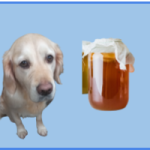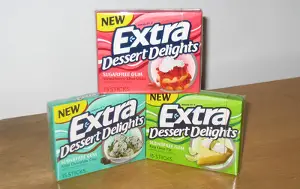
Did you know that 4.4 million people consumed 8 or more Pringles bags in 2020 in the US? Well, you heard that right.
Pringles are doubtlessly one of the most popular go-to snacks, especially in the US.
These chips typically come in regular chips bags or cylindrical tubes that stack your Pringles perfectly into shape.
According to stats by Nutritionix, the original Pringles ranks at the top 3 of the most eaten chips in the US!
While Pringles have countless flavors to savor, some of the favorite flavors you may recognize are the BBQ, cheddar cheese, cheddar cheese and sour cream, sour cream and onion, and of course, the infamous original flavor.
Knowing what you feed yourself is just as important as what you feed to your furry pals.
With that being said, this article entails everything you need to know about Pringles, whether dogs can have them or not, and potentially safer alternatives as their quick-bite options.
How many different flavors of Pringles are there?
Whether it be their latest wavy crisps or new punching flavors like the sweet and tangy BBQ, it makes it no wonder why Pringles make an excellent snack for any occasion.
You may have seen some of the familiar flavors, such as the original, BBQ, cheddar cheese, or the sour cream and onion, but these are just a few of many!
Up to this day, Pringles offers a variety of flavors, 21 unique and delicious flavors in the US, to be exact.
Some of these flavors include ranch, Wendy’s spicy chicken (who knew, right?), buffalo ranch, pizza, salt and vinegar, and the screamin’ dill pickle, and there’s more where that came from.
What are the ingredients in Pringles?
Like all thumbprints (and paw prints, if there ever is such a thing), every Pringle flavor consists of various ingredients, which may vary from one to another.
However, there are several primary main and common ingredients found in all Pringles, regardless of their flavors, that you may want to take note of.
They include:
- Dried potatoes (an essential, of course)
- Vegetable oil (corn, cottonseed, high oleic soybean, and/or sunflower oil)
- Degerminated yellow cornflour
- Cornstarch
- Rice flour
- Maltodextrin
- Mono- and Diglycerides
- Salt
- Wheat starch
Consider these ingredients the foundational building blocks to any Pringles flavor you come across. This is essential to keep in mind, especially when it comes to diets for both humans and our tail-wagging friends.
Are Pringles toxic to dogs?
Remember the list of common ingredients of Pringles?
Well, this is where you may want to take notes.
While most common ingredients, several primary such as potatoes, vegetable oil, and maltodextrin, are generally safe in moderate amounts, there’s just one particular ingredient that raises the alarm; sodium, high amounts of it.
Unlike humans, the amount of sodium (or salt) that dogs can intake and tolerate is much less than we humans can.
Although sodium is an essential compound to maintain healthy nerve and muscle cell functionalities, the high levels found in Pringles are simply a no-no for dogs.
High levels of sodium intake are a massive problem for our beloved canines.
This may cause dogs to dehydrate (as cells start releasing water to balance the excess salt levels), vomit, and have diarrhea (major yikes there).
In addition, though those enticing flavors may excite the human taste bud, most of these flavors are dangerous to dogs.
This is especially true for onion- or garlic-flavored Pringles, as onions and garlic are toxic to dogs, regardless of their form.
What are the signs of onion or garlic toxicity?
Onions packs in a decent punch of flavors such as sour cream and onion, pizza, and cheddar cheese Pringles and are safe in healthy amounts for humans but dogs?
Quite the contrary. Onions cause GI tract inflammation and may lead to oxidative hemolysis, even in powdered form (typically used in chips).
Oxidative hemolysis causes red blood cells to burst, causing less oxygen to be transported around the body.
If one too many red blood cells burst, a dog will be oxygen-deprived and may die as a result.
There are 18 Pringles flavors that contain either onion or garlic.
And they are: BBQ, Cheddar cheese, Cheddar and sour cream, Pizza, Sour cream and onions, Ranch, Screamin’ dill pickle, Parmesan and roasted garlic, Rotisserie, Honey mustard, Wendy’s spicy chicken, Scorchin’ Chilli and Lime, Scorchin’ BBQ, Scorchin’ Cheddar, Wavy Applewood smoke cheddar, Wavy Pineapple habanero, Wavy MOA burger.
This is why being knowledgeable and having a keen eye to notice signs of onion or garlic toxicity may very well be a lifesaver for your beloved furry friend.
Suppose your dog happens to only eat little to moderate amounts (say 1 to 2 pieces) of onion-flavored chips. In that case, it may have insignificant impacts.
It may not even be noticeable as onions and garlic are used in small quantities for a single Pringle, which should be fine, assuming you don’t feed them regularly.
But when it comes to large intakes, such as eating a whole packet of onion- or garlic-containing chips, it has a good chance of intoxicating your dog.
With that being said, here are common symptoms you should look out for:
- Nasty breath
- Mouth irritation (due to drooling)
- Vomiting (oh dear)
- Diarrhea
- Reddish urine discoloration
- And more
Note: If you know your furry friend has consumed any form of onions in relatively high amounts and experiences any of the following symptoms, immediately take them to the local vet to prompt treatment.
Is there a safe flavor of Pringles to feed your dog?
We hate to break it to you, but Pringles-sharing (regardless of what flavor it may be) with your tail-wagging pals is a no-can-do.
This is simply because of their unacceptable sodium levels and dangerous flavors that contain onions or garlic.
Though feeding them a piece or two won’t intoxicate them or anything, we highly advise that you consider dog treats instead.
As the saying goes: “Better safe than sorry” applies here.
Though it may be hard to watch those googly and adorable eyes begging for a bite, please gather muster up the strength to say no, for their goodness sake.
Is there any nutrition in Pringles?
Pringles are considered snacks and should by no means be the main entree for breakfast, lunch, or dinner meals.
While nutrition may vary from one flavor to another, for every 15 pieces (or about 30 grams), it packs in about 150 calories, 16 grams of carbs, 2.5 grams of saturated fat, between 130 mg and 180 mg of sodium, and zero added sugars.
With their ingredients, Pringles may contain several minerals.
These include a small amount of Calcium at about milligrams, some potassium at about 110 milligrams per serving.
For specific nutritional facts based on your chosen flavor, check them out here.
Are tortilla chips any safer?
Though tortilla chips such as Tostitos may have considerably lower sodium than Pringles, they still have intolerable sodium levels for our furry besties.
If it becomes an absolute necessity to feed your dogs tortilla chips, ensure you only give them plain tortilla chips with a maximum of two pieces, and no more (we repeat, no more).
The reason why you can only occasionally feed one or two plain tortilla chips is due to the presence of garlic and onions in guacamole (aka tortilla chips’ soulmate, if you will).
As mentioned, garlic and onions are pretty toxic to dogs, which is why it’s best to keep their paws as far away from them as you possibly can.
Is popcorn a good alternative?
Whether it be a movie date or a casual Sunday afternoon, popcorns make a great snack to keep you company.
You might be wondering: “So, does that make it a safer alternative to tortilla chips or Pringles for dogs?” Glad you asked!
In short, this depends on the flavor.
Let us explain.
Popped corn kernels aren’t bad for your furry friends at all.
In fact, it packs in various essential minerals, including magnesium, manganese, phosphorus, and zinc, for healthy body function.
In addition, popped corn kernels may also contain some fiber and vitamins as well.
This is why the best way to serve this occasional treat is to serve it as plain, air-popped popcorn.
When it comes to adding flavors such as butter or a sprinkle of salt, this is where it becomes unsafe for dogs to eat.
Though they may taste twice as better as plain ones, all the butter, oils, and sodium may stimulate gastrointestinal issues and may lead to obesity due to fat contents in butter and oils.
Also, please be mindful that kernels may become a choking hazard as they may get stuck in your furry pal’s teeth.
With that being said, it is essential that you triple-check that all the whole and partially popped kernels are kept away from the serving bowl to keep your canines safe and sound.
Note: If you are unsure whether popcorns are suited to your dog’s health, we highly recommend seeking professional advice from your local vet.
This is important, especially if your dog has underlying health conditions.
Can dogs eat Pringles?
As much as we would like to uphold that sharing is caring, this is not the case for dogs.
As tasty and undeniably crispy Pringles can be, giving them to dogs as treats is a no-go, unfortunately.
Though giving them only one or two pieces won’t be much of an issue for their health, it is best to keep Pringles to yourself.
Two of the dangerous ingredients in Pringles that pose a major threat for canines are onion or garlic and high sodium content.
Though serving them plain, air-popped popcorn may be a safer alternative when done occasionally, it is still best to stick to your regular dog treats for their wellbeing and overall safety.





